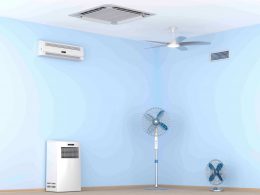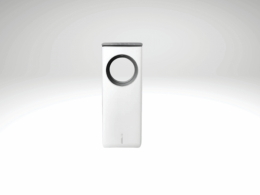As the temperature rises and the days become hotter, many of us turn to air conditioners to keep our homes and offices cool and comfortable. Among the various types of air conditioning units available, window air conditioners are a common choice, especially for small spaces or rental properties. They are compact, easy to install, and often more affordable than other types. However, have you ever wondered how these machines transform hot, humid air into a cool breeze at the push of a button?
In this blog post, we will unravel the workings of a window air conditioner, the science behind the cooling process, and what differentiates it from other types of air conditioning units. We’ll also discuss the advantages and disadvantages of these systems and provide some tips on how to maintain them to ensure optimal operation and longevity.
Whether you’re curious about the cooling gadget sitting on your window sill or in the market for a new one, this post will offer you a deeper understanding of how a window air conditioner functions and why it could be a suitable choice for your cooling needs. So, let’s dive in and demystify the fascinating world of window air conditioners.
Understanding the Basic Components of a Window Air Conditioner
Every mechanical device is an assembly of several components that work together to perform its function, and a window air conditioner is no exception. Here, we will introduce the key components of a window air conditioner that are essential to its operation.
- The Cooling Coil with a Cooling Fan: This is where the magic happens. The cooling coil is filled with refrigerant, a substance that absorbs heat from the air that passes over it. The cooling fan helps in circulating the room’s air over this coil, enabling the air to cool down.
- The Compressor: Consider this the heart of your air conditioner. It compresses the refrigerant, raising its temperature and pressure. The hot, high-pressure refrigerant then travels to the condenser.
- The Condenser Coil and Fan: Located on the exterior side of the air conditioner, the condenser coil and fan release the heat absorbed from your room to the outside environment.
- Expansion Valve: Before the refrigerant returns to the cooling coil, it passes through the expansion valve. This component rapidly expands the refrigerant, reducing its pressure and temperature, preparing it to absorb heat again.
- Filter and Controls: The filter purifies the incoming air, while the controls let you manage the settings of the air conditioner, such as temperature and fan speed.
These components play a crucial role in the functioning of the window air conditioner. They contribute to the cooling cycle, a process that we will explore next. Understanding the cooling cycle will help you see how these parts interact to cool down your room effectively.
The Science Behind Air Conditioning
Before we delve into the specifics of how a window air conditioner works, it’s essential to understand the fundamental scientific principles on which air conditioning is based. The principles of heat transfer and phase conversion are central to how an air conditioner cools a room.
Heat Transfer
This principle is quite straightforward – heat naturally moves from warmer areas to cooler ones until there is no temperature difference. When you switch on your air conditioner, the heat from your room is absorbed by the refrigerant in the cooling coil, making your room cooler.
Phase Conversion
Phase conversion is the process of a substance changing from one state of matter to another – in this case, from a liquid to a gas and back again. When the refrigerant absorbs heat, it changes from a low-pressure gas to a high-pressure liquid. As it releases heat, it converts back to a gas. This cycle repeats over and over in an air conditioner.
The Role of Refrigerants
A refrigerant is a special fluid used in air conditioners that changes its state at relatively low temperatures. When the refrigerant absorbs heat from the room’s air, it evaporates and turns into a gas. In its gaseous form, it travels to the compressor, where it becomes a high-pressure, hot gas. It then moves to the condenser, where it releases the absorbed heat and turns back into a liquid, ready to start the cycle again.
The principles of heat transfer and phase conversion, coupled with the unique properties of refrigerants, make it possible for an air conditioner to cool your room effectively. Next, we will take a step-by-step look at this cooling cycle in a window air conditioner.
How Does a Window Air Conditioner Work?
Now that we’ve established the basic principles and key components, let’s walk through the step-by-step process of how a window air conditioner cools your room.
Step 1: Air Intake
The process begins when you switch on the air conditioner, and the room’s warm air is drawn into the unit. The air first passes through the filter, where any dust or airborne particles are removed.
Step 2: Air Cooling
The cleaned air then moves over the cooling coil filled with the low-pressure, cold refrigerant. As the air passes over the coil, heat from the air is absorbed by the refrigerant. This heat transfer cools down the air.
Step 3: Expelling the Heat
While the cooled air is pushed back into the room by the cooling fan, the refrigerant, now a hot gas due to the absorbed heat, moves to the compressor. The compressor pressurizes the hot gas and sends it to the condenser coil. Here, the heat absorbed from your room is released into the outside environment with the help of the condenser fan.
Step 4: Recirculation of Cooled Air
Meanwhile, the refrigerant, having lost its heat, turns back into a cold, low-pressure liquid as it passes through the expansion valve. It is now ready to absorb more heat from the room’s air. This completes the cooling cycle, and the process repeats.
Differentiating Between Window Air Conditioners and Other Types
While window air conditioners are commonly used in many households, there are several other types of air conditioning units available on the market, each with its own set of features, advantages, and disadvantages. Here, we will compare window air conditioners with some of the other popular types, including central air conditioning, portable air conditioners, and split air conditioners.
Central Air Conditioning
Central air conditioning systems are designed to cool the entire house or building. They work on similar principles as a window unit but on a larger scale. While these systems are highly efficient for larger spaces, they are generally more expensive to install and run than window units. They also require a more complex installation process involving ductwork throughout the building.
Portable Air Conditioners
Portable units are similar to window units in terms of their cooling capacity and energy consumption, but as the name suggests, they are portable. They can be moved from room to room and typically vent through a window using an included kit. While portable air conditioners offer flexibility, they tend to be noisier and less energy-efficient compared to window units.
Split Air Conditioners
Split air conditioners consist of two parts: an indoor unit that blows cool air into the room and an outdoor unit that houses the compressor and condenser. These systems are generally more efficient, quieter, and aesthetically pleasing than window units, but they require a more complex installation process and are typically more expensive.
Benefits and Limitations of Window Air Conditioners
Like any other appliance, window air conditioners come with their own set of advantages and disadvantages. Understanding these will help you make an informed decision if you’re considering investing in one.
Benefits of Window Air Conditioners
Cost-Effective: Window air conditioners are generally cheaper compared to other types of air conditioning units. Not only are the units themselves less expensive, but they also cost less to install and run.
Easy Installation: They can be installed in any double-hung window, making the process relatively simple. Most units can be installed by the homeowner, avoiding the need for professional installation.
Space-Saving: Since they are installed in a window, they don’t take up floor space, which can be beneficial in smaller rooms or apartments.
Energy-Efficient for Small Spaces: When used to cool a single room or a small space, window units can be quite energy-efficient.
Limitations of Window Air Conditioners:
Limited Cooling Area: Window air conditioners are ideal for cooling one room or a small area. If you’re looking to cool a large house or multiple rooms, you might need to install several units or consider a different type of air conditioner.
Window Blockage: As the name suggests, window air conditioners need to be installed in a window, which means they can block natural light and views. They may also present challenges for homes with non-standard windows.
Noise Levels: While modern window air conditioners are much quieter than older models, they are generally noisier than central or split air conditioners.
Knowing the pros and cons of window air conditioners will help you decide whether this type of unit is the best fit for your needs. If you already own one or decide to get one, it’s important to know how to maintain it to ensure it runs efficiently and lasts for many years, which is what we’ll discuss in the next section.
Maintaining Your Window Air Conditioner
Maintaining your window air conditioner not only ensures efficient operation but also extends the lifespan of the unit. Here are some basic maintenance practices for window air conditioners:
1. Regular Cleaning: Regularly clean the filter to remove any dust or debris that might block airflow and reduce the unit’s efficiency. Most window air conditioners have a reusable filter that can be removed, cleaned, and reinserted.
2. Annual Check-up: At the start of the cooling season, give your unit a thorough check-up. Ensure the seals around the unit are intact to prevent cool air from escaping. Check the condenser coils for dirt or damage, as these can affect the unit’s ability to expel heat.
3. Clear the Outside: The exterior part of the air conditioner should have clear space around it to properly dissipate heat. Keep the area free of leaves, dirt, or other potential obstructions.
4. Use a Cover in Off-Season: If you don’t plan on using your air conditioner during the colder months, consider using an insulating cover. This will protect the unit from winter weather and debris.
5. Professional Servicing: Although there are many aspects of air conditioner maintenance that you can handle yourself, it can be beneficial to have your unit professionally serviced every few years to ensure it’s operating at its best.
Remember, taking care of your window air conditioner will not only enhance its performance but also prolong its service life, providing you with a comfortable, cool environment for years to come. In the next section, we will summarize the key points we’ve covered about how window air conditioners work.
Conclusion
Window air conditioners are indispensable appliances that offer relief from the heat and improve the comfort of our homes. By understanding their working mechanism, we gain an appreciation for the technology that helps us stay cool during sweltering summers.
To summarize, a window air conditioner works by drawing in warm air from your room, cooling it down by passing it over a cooling coil filled with refrigerant, and then expelling the cooled air back into the room. This process is governed by the principles of heat transfer and phase conversion, and the cycle continues until your room reaches the desired temperature.
While window air conditioners have several advantages, including cost-effectiveness, ease of installation, and being space-saving, they do have limitations, such as a restricted cooling area, potential window blockage, and noise levels. However, with proper care and maintenance, a window air conditioner can serve you effectively for many years.
Whether you’re choosing an air conditioner for the first time or seeking to understand the one you have, we hope this guide has given you valuable insights into how a window air conditioner works and whether it’s the right choice for your cooling needs. As we continue to depend on these incredible devices for our comfort, understanding their functionality helps us use them more effectively and appreciate the science behind our everyday comforts.
In the future, if you’re ever stuck in the summer heat and find solace in the cool breeze from your window air conditioner, you’ll know exactly what marvels of engineering and science are at play to deliver that comfort.
Frequently Asked Questions (FAQs)
1. How much energy does a window air conditioner use?
The energy use of a window air conditioner depends on its size, how often it’s used, the temperature setting, and its energy efficiency rating. Always look for units with an Energy Star rating for the most energy-efficient options.
2. Can a window air conditioner cool an entire house?
A window air conditioner is best suited for cooling a single room or a small space. If used to cool an entire house, multiple units may be required, and even then, cooling may not be evenly distributed.
3. Can I install a window air conditioner myself?
Most window air conditioners are designed to be user-installed and come with a full set of installation instructions. However, you need to ensure that the window is sturdy enough to hold the unit and that the unit is properly secured to avoid accidents.
4. How often should I clean my window air conditioner?
It’s recommended to clean the filter of your window air conditioner at least once a month during the cooling season. Other parts, like the condenser coils, should be checked at least once a year.
5. How long does a window air conditioner last?
With proper care and maintenance, a window air conditioner can last between 10-15 years. This lifespan can be extended with regular cleaning, annual check-ups, and professional servicing when needed.
6. Is it safe to leave a window air conditioner on all day?
While it’s safe to leave a window air conditioner running all day, it’s not energy-efficient. It’s better to use a programmable timer or thermostat to manage the cooling based on your needs.
7. Can I use a window air conditioner in a room without windows?
A window air conditioner needs a window for installation and proper ventilation. If a room doesn’t have windows, a portable air conditioner might be a more suitable option.
8. Is it necessary to cover my window air conditioner in the winter?
Covering your window air conditioner during the winter can protect it from the weather and debris. However, it’s often better to remove and store the unit indoors during the colder months.










